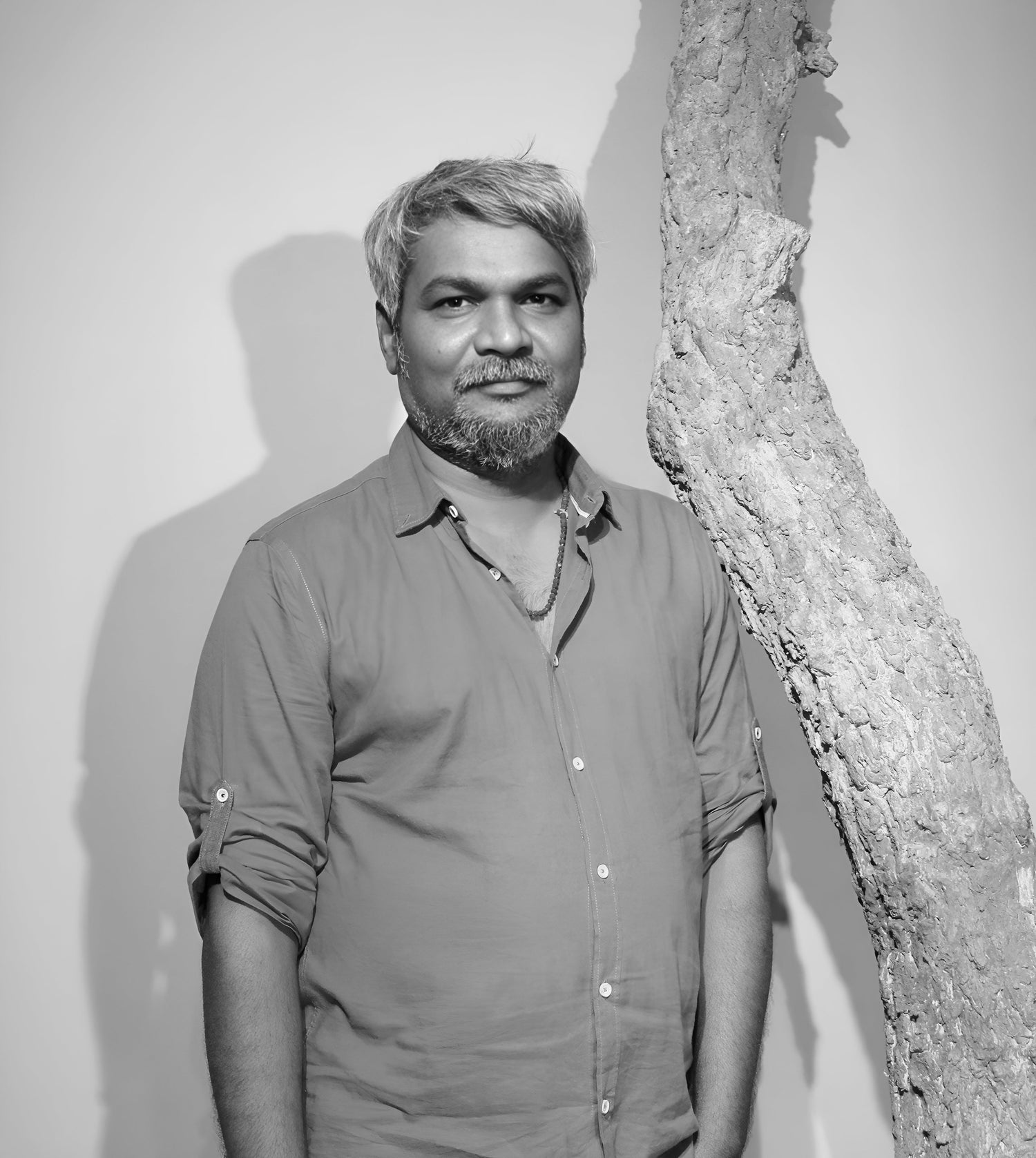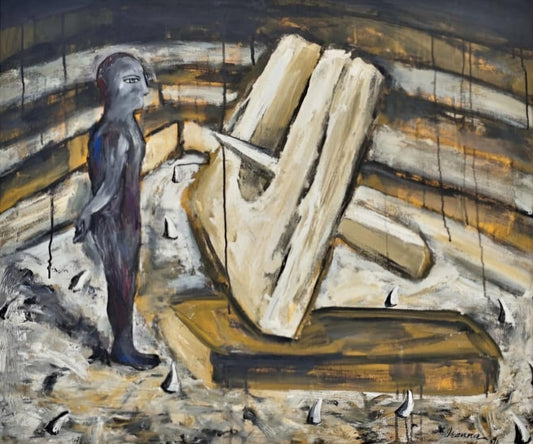
G. R. IRANNA
G. R. Iranna’s art confronts the visceral and often unsettling dimensions of human experience, revealing layers of emotional and metaphysical pain through a textured and powerful visual language. Born in 1970, his work defies easy categorization, blending elements of idealism, representation, and modernism into compositions that speak to the complexities of contemporary Indian identity. The evolution of his style traces a journey from imposing figurative forms toward a more abstract and form-driven vocabulary, marked by surfaces that appear bruised, raw, and charged with tension.
Iranna’s earlier canvases were dominated by large human figures that conveyed a commanding presence, yet his focus gradually shifted inward, dissolving figuration into abstraction. This transition intensifies the psychological depth of his work, where clashes of color and texture create a dynamic energy that mirrors internal struggle and conflict. His compositions engage the viewer with their layered complexity, inviting a contemplation of pain not only as an individual experience but as a collective, existential condition.
Educated at the College of Visual Art in Gulbarga, where he earned his BFA, and later at the College of Art in New Delhi with an MFA, Iranna further enriched his practice during a residency at London’s Wimbledon School of Art. These formative experiences shaped his technical skills and conceptual approach, allowing him to navigate diverse influences while maintaining a distinct and authentic artistic voice. His solo exhibitions at respected venues such as Delhi Art Gallery, Jehangir Art Gallery, and Gallery Espace have showcased his ability to evoke emotional intensity through innovative forms. Alongside critical acclaim, Iranna has been honored with awards from the Lalit Kala Akademi, the Bansi Parmimu Memorial Committee, and the Delhi College of Art, reflecting recognition of his significant contributions to Indian contemporary art.
Iranna’s oeuvre stands as a profound inquiry into pain, identity, and resilience, articulated through a modernist lens that remains deeply rooted in cultural context. His work continues to challenge and inspire, offering a potent exploration of the tensions between form and feeling, representation and abstraction. In doing so, G. R. Iranna asserts his place among the compelling voices shaping the evolving narrative of contemporary Indian art.

